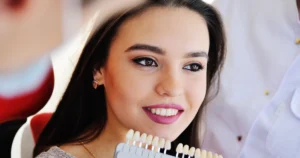Introduction
When faced with severe tooth decay or damage, many patients find themselves at a crossroads: should they opt for a root canal or a tooth extraction? Both procedures are common solutions provided by dental professionals, including endodontists, but they serve different purposes and have varying implications for your oral health. Understanding the distinctions between root canal therapy and tooth extraction, along with their respective benefits, can aid you in making an informed decision.
Understanding Root Canal Therapy
A root canal is a dental procedure aimed at saving a tooth that is badly infected or decayed. This treatment is often recommended by an endodontist, a dentist who specializes in treating issues within the tooth’s pulp and the tissues surrounding the root of a tooth.
The Root Canal Procedure
- Diagnosis and Preparation: The process starts with an X-ray to assess the infection and damage. Local anesthesia is then administered to numb the area around the affected tooth.
- Cleaning the Root Canal: The endodontist makes an incision in the tooth’s crown to extract the infected or damaged pulp. The root canals are then thoroughly cleansed, shaped, and disinfected.
- Filling the Root Canal: After cleaning, gutta-percha, a biocompatible material, is used to fill the empty canals. The tooth is then cemented to avoid future infection.
- Restoring the Tooth: Lastly, a crown or filling is applied to the tooth. This restores its function and appearance.
Benefits of Root Canal Therapy
- Preserves the Natural Tooth: A root canal saves the natural tooth, maintaining your natural bite and jaw alignment.
- Prevents the Spread of Infection: Removing the infected pulp stops the spread of infection to adjacent teeth.
- Relieves Pain: Root canal therapy eliminates the pain caused by the infected tooth.
- Long-Term Solution: With proper care, a root canal-treated tooth may remain healthy for a lifetime.
Understanding Tooth Extraction
Tooth extraction refers to the full removal of a tooth from its socket. This procedure may be required when a tooth is too damaged to be salvaged by a root canal, especially in cases of severe gum disease.
The Tooth Extraction Procedure
- Preparation: An X-ray is taken to assess the tooth and surrounding bone. Local anesthesia is used to numb the area.
- Extraction: The dentist or oral surgeon utilizes an elevator to loosen the tooth before employing forceps to remove it.
- Aftercare: Post-extraction, the patient receives instructions to manage pain and prevent infection, which may include taking prescribed medications and avoiding certain foods.
Benefits of Tooth Extraction
- Eliminates Problem Teeth: Extraction completely removes the problem tooth, preventing further pain and infection.
- Cost-Effective: It is generally less expensive than a root canal and crown.
- Prepares for Future Dental Work: Extraction can pave the way for orthodontic treatments or the placement of dental implants.
Making the Right Choice
Determining between a root canal and a tooth extraction is a vital choice that is influenced by a number of factors, including the tooth’s state, overall dental health, and personal preferences. Here are some key factors to consider when making this choice:
Severity of Damage
- Extent of Decay or Damage: If the tooth is severely decayed or damaged beyond repair, extraction might be the only viable option. A root canal can save a tooth with extensive decay or damage, but it must have enough healthy structure remaining to be achievable.
- Structural Integrity: Consider whether the tooth has sufficient structural integrity to be restored after a root canal. If the tooth is too weak, extraction might be necessary.
Infection and Inflammation
- Spread of Infection: If the infection has progressed to the surrounding tissues or bone, a root canal may not be adequate to address the problem, so extraction is the preferred option.
- Chronic Infection: For teeth that have undergone multiple treatments and continue to have chronic infections or abscesses, extraction may be recommended.
Cost and Insurance Coverage
- Procedure Costs: Root canal therapy followed by a crown can be more expensive than a simple extraction. However, consider the long-term expenses of replacing a removed tooth with an implant, bridge, or denture.
- Insurance Coverage: Check with your dental insurance carrier to see exactly which procedures are covered and to what extent, as this may impact your decision.
Long-Term Oral Health
- Preservation of Natural Teeth: Keeping your natural teeth is generally preferred for maintaining oral health, as it helps preserve the jawbone and the natural alignment of your teeth.
- Future Dental Work: Consider whether you are willing to undergo future dental work, such as crowns or implants, which may be necessary after a root canal or extraction.
Aesthetic Considerations
- Visible Teeth: If the affected tooth is visible when you smile or talk, preserving it with a root canal might be more desirable to maintain your appearance.
- Restoration Options: For extracted teeth, consider the aesthetic and functional outcomes of potential restoration options, such as implants or bridges.
Pain and Recovery
- Immediate Pain Relief: Both procedures aim to relieve pain, but the type of pain and the recovery process can differ. Root canal therapy typically involves a period of healing where the tooth adjusts to being filled, whereas extraction may involve post-surgical pain and a longer recovery.
- Post-Procedure Care: Consider your ability to manage post-procedure care, including potential complications like dry socket from extractions or the need for a crown after a root canal.
Consultation with a Dental Professional
- Specialist Advice: Consulting with an endodontist (for root canals) or an oral surgeon (for extractions) can provide specialized insights based on the specifics of your dental condition.
- Second Opinion: If unsure, seeking a second opinion from another dental professional can help clarify the best course of action.
Overall Health Considerations
- Medical Conditions: If you have underlying health conditions that affect your healing ability or increase your risk of complications, discuss these with your dentist. Conditions such as diabetes or heart disease can influence the choice of treatment.
- Medication and Treatment Interactions: Consider any medications you are taking and how they might interact with dental procedures or affect healing.
Personal Preferences and Lifestyle
- Comfort and Convenience: Consider which procedure you feel more comfortable with and how each fits into your lifestyle. Some patients may prefer the idea of preserving their natural tooth, while others may opt for extraction to avoid the possibility of future complications.
- Commitment to Follow-Up Care: Root canals typically require follow-up appointments for the placement of crowns, while extractions may involve follow-up for implants or dentures. Evaluate your willingness and ability to commit yourself to these further treatments.
Impact on Oral Function
- Chewing and Speaking: Consider how each option will affect your ability to chew and speak. Preserving a natural tooth usually maintains better oral function compared to living with a missing tooth or waiting for an implant.
- Adjacent Teeth: An extracted tooth can lead to shifting of adjacent teeth, which might require orthodontic treatment in the future. A root canal helps maintain the position of neighboring teeth.
Conclusion
Root canal therapy and tooth extraction both play crucial roles in dental care; root canals save natural teeth and preserve oral health, while extractions are necessary for severe damage or infection. At Luth & Heideman Center for Dental Care, we offer root canal treatments, essential for preserving natural teeth and relieving pain from infected pulp, which occurs when bacteria enter through cracks or cavities in the tooth. Embark on a root canal therapy to save your natural teeth and experience lasting relief from pain and infection, restoring both your smile and comfort.






